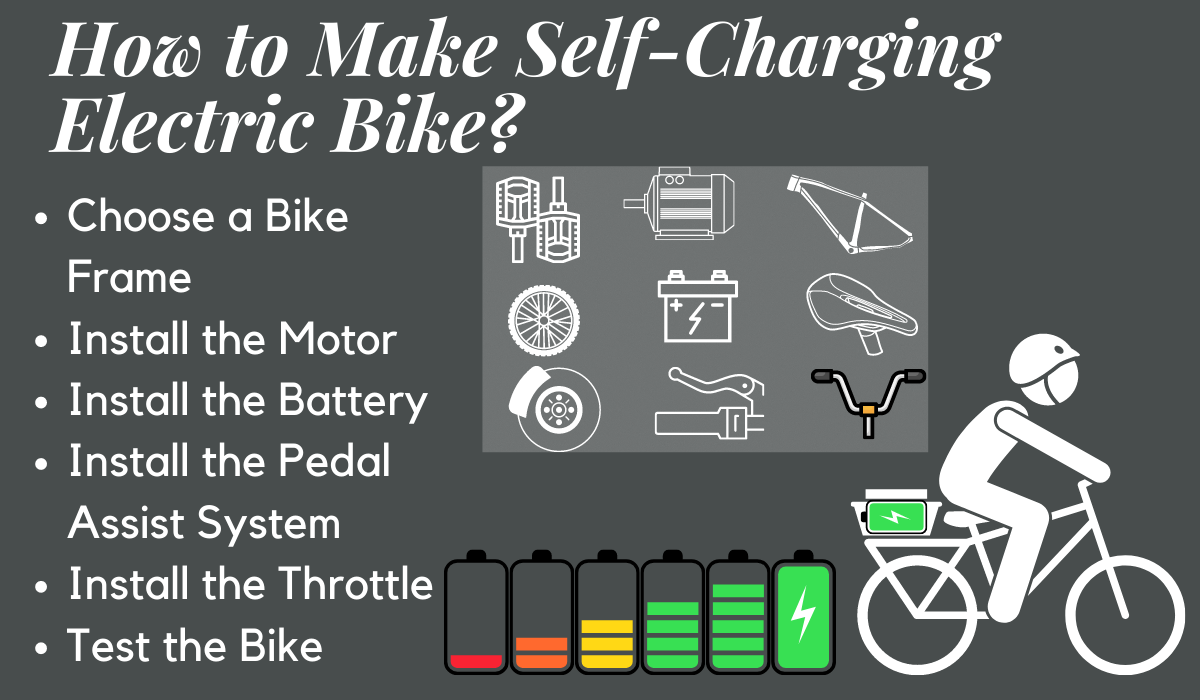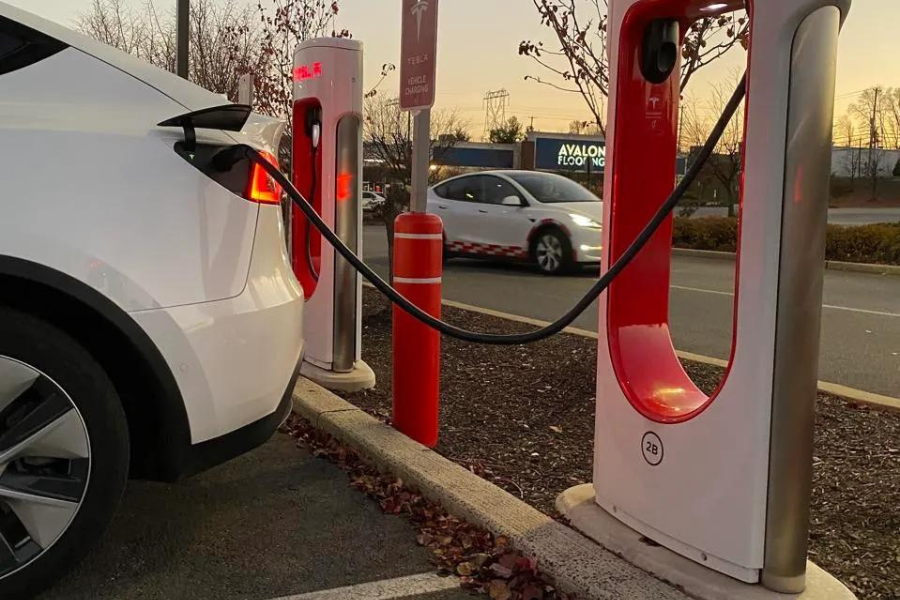The self charging electric bikes, also known as e-bikes, are a revolutionary mode of transportation that combines the benefits of traditional biking with the convenience of electric power.
These innovative vehicles are equipped with a pedal-assist system that uses the kinetic energy generated by the rider’s pedaling to recharge the battery, allowing for a sustainable and environmentally friendly way to get around.
E-bikes are perfect for commuters, recreational riders, and anyone looking to reduce their carbon footprint. With a self-charging e-bike, you can enjoy the physical benefits of cycling while still having the option to use electric power to assist you on longer rides or during challenging terrain.
In addition to the pedal-assist system, many self-charging electric bikes also come equipped with a pedalboard, which provides an enhanced biking experience by allowing the rider to control the level of electric assistance with their feet.
This feature allows for a more intuitive and interactive riding experience and greater control over the bike’s performance. Overall, self-charging electric bikes with pedalboards offer a unique and eco-friendly transportation solution that is both fun and functional.
Whether commuting to work or taking a leisurely ride through the countryside, these innovative bikes will enhance your riding experience.
How Self-Charging Electric Bikes Work?
Self-charging electric bikes, also known as e-bikes, are a unique and innovative mode of transportation that combines the benefits of traditional biking with the convenience of electric power.
Many newbies inquire, do electric bikes charge when you pedal? So, these bikes are equipped with a pedal-assist system, which uses the kinetic energy generated by the rider’s pedaling to recharge the battery.
The way this works is simple: as the rider pedals, the bike’s motor is activated and provides additional power to the pedals, making it easier for the rider to pedal and travel faster. At the same time, the energy from the pedaling is converted into electricity, which is used to recharge the bike’s battery.

It means that as the rider pedals, the battery is recharged. This will provide a sustainable and environment-friendly way to get around. The pedal-assist system can be adjusted to different levels, allowing the rider to choose how much electric assistance they want while they pedal.
In addition to the pedal-assist system, many self-charging electric bikes also come equipped with a throttle, which allows the rider to activate the electric motor without pedaling.
Now you know you can charge your bike while riding. It can be helpful for shorter distances or when riders want a break from pedaling. So, this section also answers the query: Can you charge an e-bike while riding?
How to Make Self-Charging Electric Bike?
Learning how to make self-charging electric bike is not a complex process that requires a general understanding of electrical engineering and mechanics. Here is a general outline of the steps involved in making a self-charging electric bike:

Choose a Bike Frame:
You will need to start with a sturdy bike frame that supports the weight of the electric components.
Install the Motor:
The self-charging electric bike motor is the core component of an E-bike and is responsible for providing power to the pedals. Electric bikes can be powered by hub motors, mid-drive motors, and friction drive motors, all of which require self-charging. Choose a motor that is appropriate for your needs and budget.
Install the Battery:
The battery is responsible for storing the electricity that powers the motor. Lead-acid, lithium-ion and nickel-metal hydride batteries can be used for electric bikes.
Choose a battery that is appropriate for your needs and budget.
Install the Pedal-Assist System:
The pedal-assist system is responsible for converting the kinetic energy from the rider’s pedaling into electricity that can be used to recharge the battery. In addition to cadence-based pedal-assist systems, torque-based pedal-assist systems are also available for electric bikes. Choose a system that is appropriate for your needs and budget.
Install the Throttle:
Many electric bikes also come equipped with a throttle, which allows the rider to activate the electric motor without pedaling. The throttle can be a simple on/off switch or variable speed control.

Test the E Bike:
Once all the components have been installed, it is essential to test the bike to ensure it is functioning properly. This may involve adjusting the pedals, the motor, or other components to achieve the desired performance. It gives you an idea of the steps involved in making a self-charging electric bike.
How Much Time Does an Electric Bike Require to Fully Charge?
The time it takes to charge an electric bike fully depends on several factors, including the size of the battery, the type of battery, and the type of charger used.
Here are some general guidelines for electric bike charging times:
Lead-Acid Batteries:
These are the oldest type of battery used for electric bikes, and they could be more efficient. It can take anywhere from 6 to 12 hours to charge a lead-acid battery fully.
Nickel-Metal Hydride Batteries:
In comparison with lead-acid batteries, these are newer and more efficient types of batteries. It can take 4 to 8 hours to fully charge a nickel-metal hydride battery.
Lithium-Ion Batteries:
The most efficient and expensive type of electric bike battery is this one. It can take anywhere from 2 to 4 hours to fully charge a lithium-ion battery. The electric bike charge time with pedalboard is the same as for a standard electric bike. The pedalboard does not affect the charging time of the bike’s battery.
It’s worth noting that these charging times are based on using a standard charger. Some electric bikes come with fast chargers that can reduce the charging time by 50%.
Advantages of Self-Charging Electric Bikes with Pedalboards
In addition to the benefits of self-charging electric bikes, many models also come equipped with a pedalboard. This feature provides an enhanced biking experience by allowing the rider to control electric assistance with their feet.
The pedalboard consists of sensors that detect the rider’s pedal strokes and adjust the level of electric assistance accordingly. This allows for a more intuitive and interactive riding experience, as the rider can easily adjust the level of assistance by changing how they pedal.
By using a pedalboard, you can also better control the performance of your bike. By adjusting the level of electric assistance, the rider can customize their ride to suit their needs and preferences.
Pedal assist is a feature found on bike models that allows the rider to use their pedaling power to assist the electric motor in propelling the bike forward. Pedal assist does not charge the e-bike battery.
A pedalboard is a feature found on some electric bikes that allow the rider to control the level of electric assistance with their feet. The rider can increase or decrease the level of assistance by pressing down on specific areas of the pedalboard.
The self-charging feature of an electric bike works by using a pedal-assist system that converts the kinetic energy generated by the rider’s pedaling into electricity, which is then used to recharge the bike’s battery.
These bikes are equipped with a pedal-assist system that uses the kinetic energy generated by the rider’s pedaling to recharge the battery, allowing for a sustainable and environmentally friendly way to get around.
Many self-charging electric bikes also come equipped with a pedalboard, which provides an enhanced biking experience by allowing the rider to control the level of electric assistance with their feet.
Overall, self charging electric bikes offer a fun and functional transportation solution perfect for commuters, recreational riders, and anyone looking to reduce their carbon footprint.





